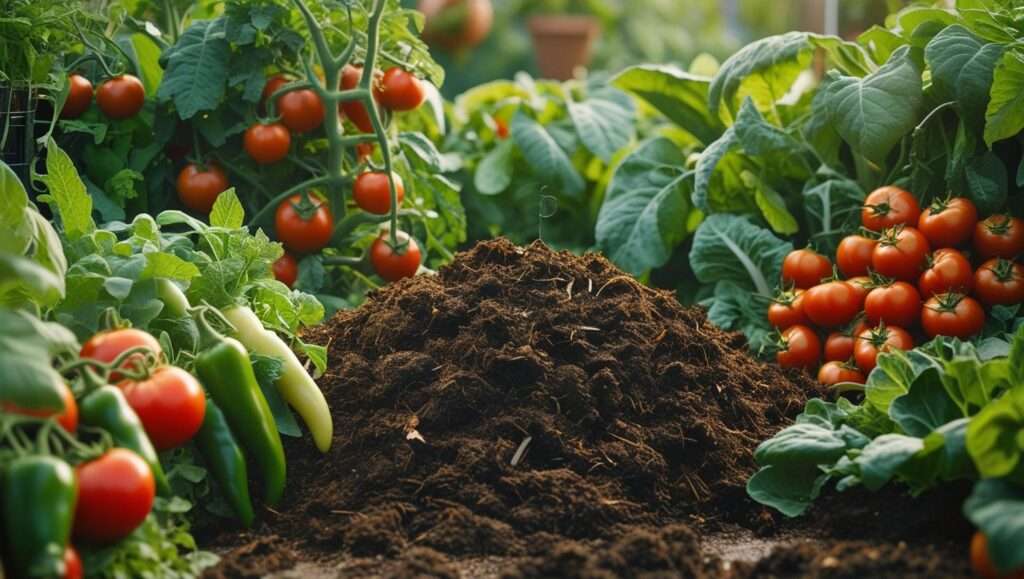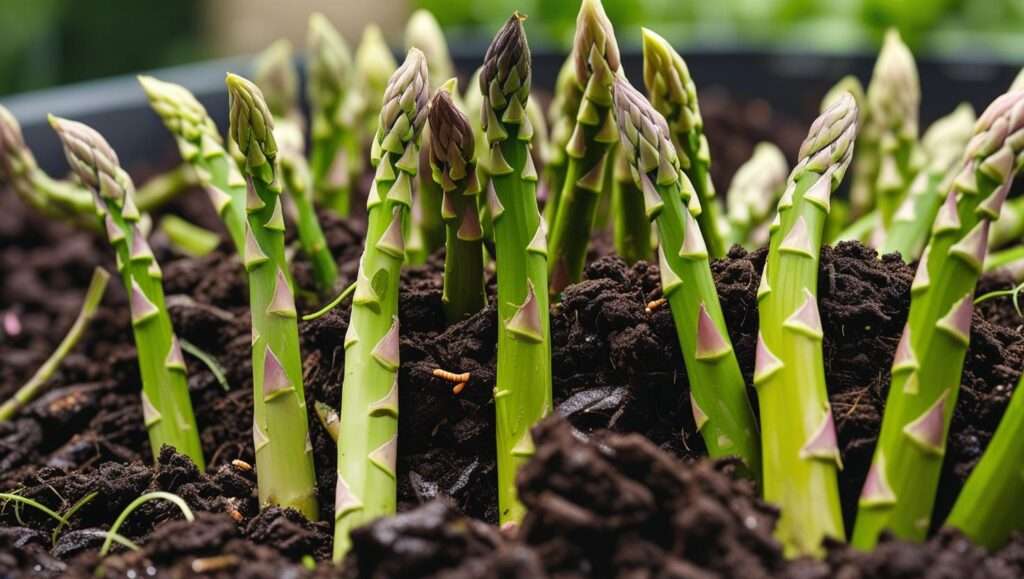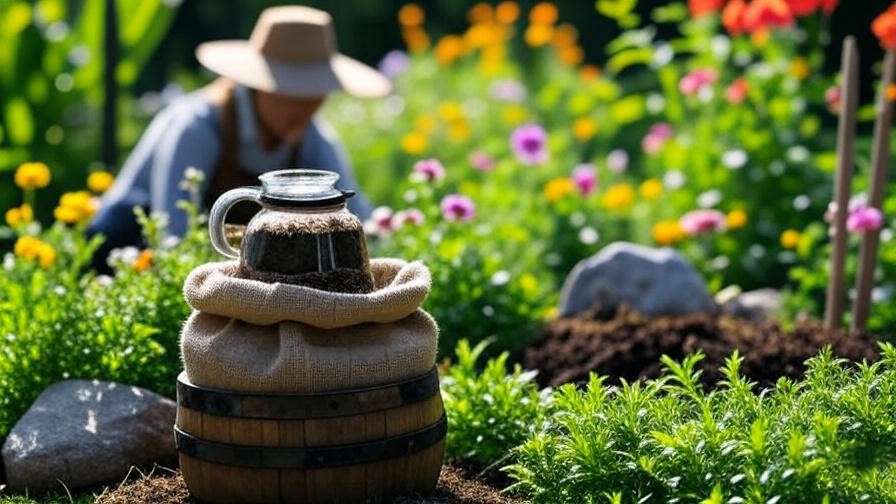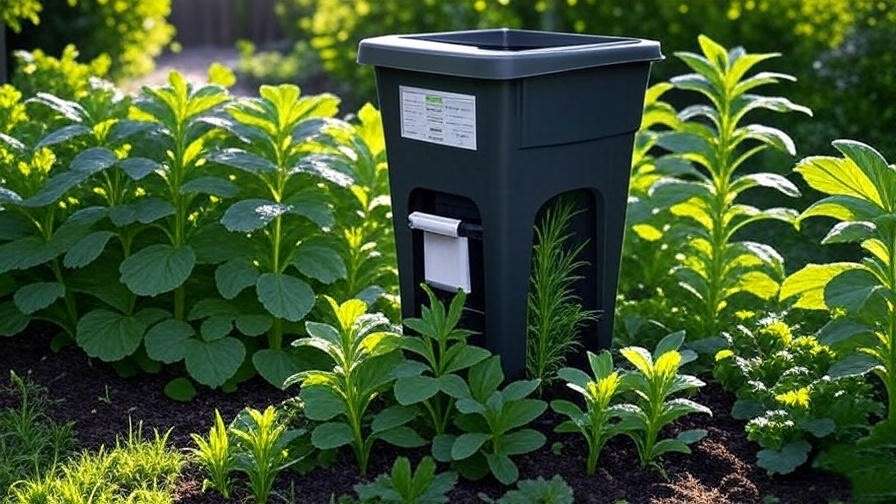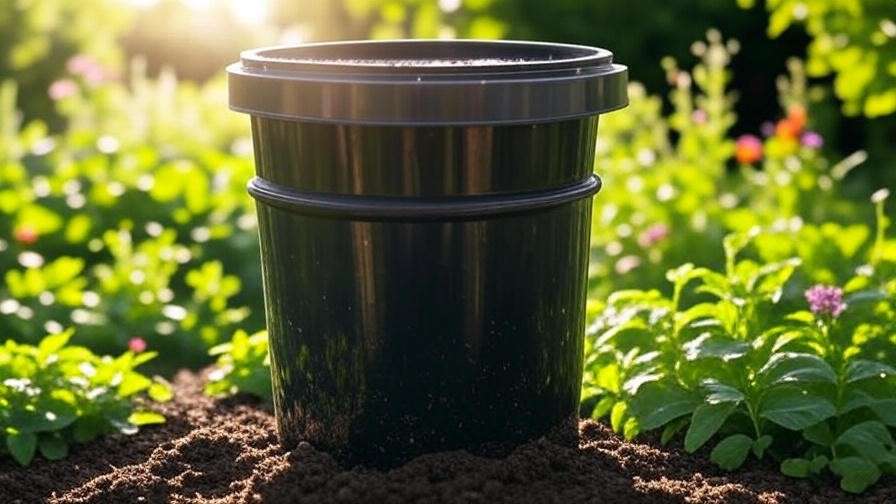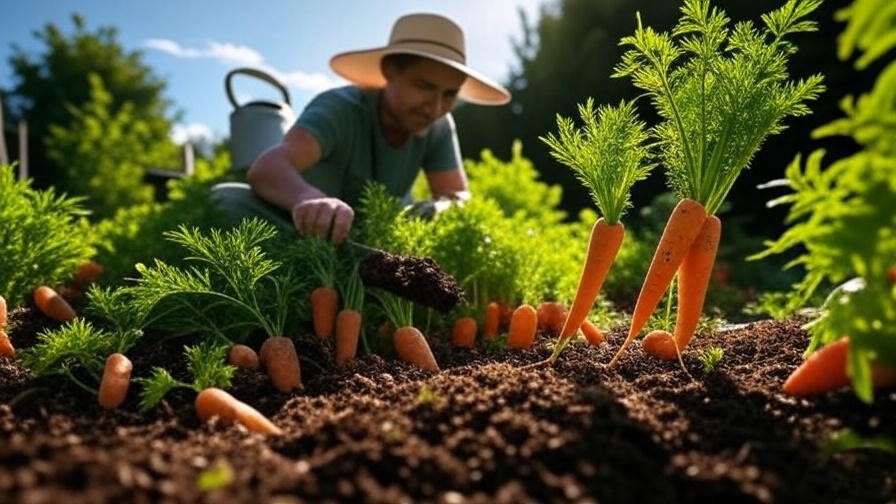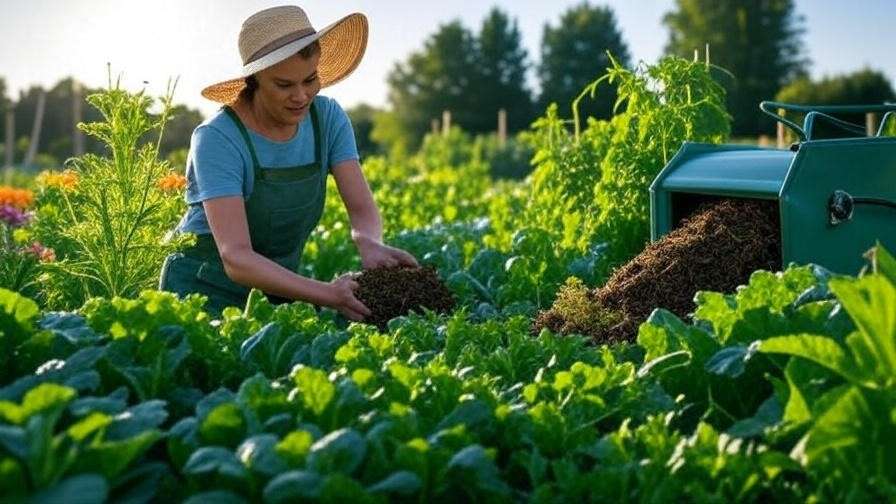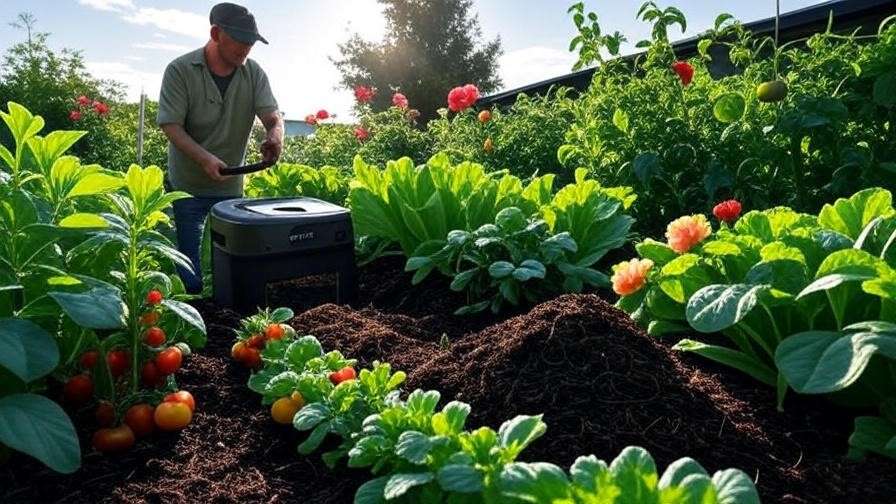Imagine stepping into a garden where vibrant tomatoes hang heavy on the vine, colorful flowers bloom with abandon, and the soil teems with life—all sparked by the magic of a pallet of compost. This bulk treasure, often containing 40–60 cubic feet of organic matter, is a game-changer for gardeners facing poor soil, low yields, or nutrient shortages. Whether you’re a beginner breaking ground or a seasoned grower scaling up, mastering the use of a pallet of compost can unlock your garden’s full potential. This guide delivers expert strategies, practical tips, and innovative techniques to ensure your garden thrives, making every shovel of compost count.
What Is a Pallet of Compost and Why It’s a Game-Changer
Defining a Pallet of Compost
A pallet of compost typically refers to a large shipment, often 1–1.5 tons or 40–60 cubic feet, delivered on a wooden pallet. It may come in bulk form or pre-bagged, depending on the supplier. This quantity is ideal for large garden beds, lawns, or landscaping projects, offering a cost-effective way to amend soil with organic material. Sourced from decomposed plant matter, manure, or food waste, a pallet of compost is a rich source of humus, essential for long-term soil health.
Benefits for Your Garden
A pallet of compost enhances soil structure, improving drainage in clay soils and water retention in sandy ones. It supplies key nutrients—nitrogen for leafy growth, phosphorus for roots, and potassium for overall vigor—while fostering beneficial microbes. Unlike synthetic fertilizers, which provide quick fixes, compost builds sustainable soil fertility, reducing erosion and supporting eco-friendly gardening. Studies show gardens amended with compost can increase crop yields by up to 20% over time.
Expert Insight: Soil scientist Dr. Elaine Ingham notes, “A pallet of compost introduces billions of microorganisms, creating a living soil that sustains plants naturally.”
Assessing Your Garden’s Needs Before Using a Pallet of Compost
Soil Testing Basics

Before diving into a pallet of compost, test your soil to tailor its use. Affordable pH and nutrient test kits, available at garden centers, or free services from local extension offices can reveal deficiencies in nitrogen, phosphorus, or potassium. Aim for a pH of 6.0–7.0 for most crops, adjusting with compost if needed. Test results guide application rates, ensuring you don’t over- or under-apply this valuable resource.
Identifying Garden Size and Crop Requirements
Calculate your compost needs based on garden size. For a 100-square-foot bed, 1–2 inches of compost (about 1–2 cubic feet) suffices for maintenance, while new beds may require 3–4 inches. Vegetables like tomatoes and peppers thrive with phosphorus-rich compost, while leafy greens like spinach need nitrogen boosts. A small raised bed (4×4 feet) might need 2–3 cubic feet, while a large vegetable plot (20×20 feet) could use half a pallet or more.
Common Soil Problems to Address
Clay soils often drain poorly, while sandy soils lose nutrients quickly. Low organic matter, common in neglected gardens, starves plants of moisture and microbes. A pallet of compost addresses these issues by loosening clay, binding sandy particles, and enriching depleted soils. For example, a gardener with compacted clay doubled their carrot yield after applying 2 inches of compost annually.
Tip: Use this chart to match soil types to compost needs:
| Soil Type | Compost Depth | Frequency |
|---|---|---|
| Clay | 2–3 inches | Annually |
| Sandy | 1–2 inches | Twice yearly |
| Low Organic Matter | 3–4 inches | Initial + yearly |
How to Handle and Store a Pallet of Compost
Safe Delivery and Unloading

Coordinating a pallet delivery requires planning. Most suppliers use forklifts, but if unavailable, a sturdy wheelbarrow or garden cart can move 50-pound bags or bulk scoops. Ensure a flat, accessible drop-off area to avoid spillage. Wear gloves and sturdy shoes to protect against weight or sharp edges. For a 1-ton pallet, enlist help or rent equipment to prevent strain.
Proper Storage Techniques
Store your pallet of compost under a tarp or in a shaded shed to retain moisture and prevent nutrient loss. Avoid direct sunlight or standing water, which can cause decomposition to stall or produce foul odors. A well-stored pallet can last 6–12 months, but check for white mold or ammonia smells, signs of improper curing.
Managing Bulk Quantities
Break the pallet into manageable portions using a shovel or pitchfork. Store excess in breathable bags or covered piles, labeling with the date to track freshness. This prevents waste and ensures you use compost when your garden needs it most.
Expert Insight: A 2024 compost management study from the University of California recommends covering pallets with breathable fabric to maintain microbial activity during storage.
Applying a Pallet of Compost: Best Practices
Preparation and Timing
Apply a pallet of compost in early spring to prepare for planting or fall to enrich soil for the next season. Clear weeds and debris, then loosen soil with a garden fork to a depth of 6–8 inches. This timing aligns with natural soil cycles, maximizing compost integration.
Application Rates and Methods

Spread 1–2 inches of compost over existing beds using a shovel, increasing to 3–4 inches for new gardens. For large areas, a compost spreader saves time. A 100-square-foot bed needs about 8–16 cubic feet, or a quarter to half a pallet. For raised beds, mix compost into the topsoil at a 1:1 ratio with native soil.
Incorporating Compost into Soil
Use a garden fork or tiller to mix compost into the top 6–8 inches, ensuring roots access nutrients. For top-dressing lawns, spread ¼ inch and rake lightly. Even distribution prevents nutrient hotspots, promoting uniform growth.
Checklist for Application:
- Test and prepare soil beforehand.
- Measure compost depth with a ruler.
- Water lightly after applying to settle compost.
- Avoid working wet compost to prevent clumping.
Maximizing Benefits with a Pallet of Compost
Enhancing Vegetable Gardens

Vegetables thrive with targeted compost use. Tomatoes and peppers benefit from phosphorus-rich compost (e.g., 1–2 inches mixed with bone meal), while leafy greens like lettuce need nitrogen boosts from well-decomposed compost. A sample plan: layer 2 inches of compost in a 4×8-foot bed, plant tomatoes at 2-foot intervals, and mulch with straw.
Boosting Flower Beds and Ornamentals
Compost enhances bloom quality and root health for roses, lilies, and perennials. Apply 1–2 inches as a top-dressing in spring, raking into the soil. Mulch with compost to retain moisture, reducing watering needs by up to 30%.
Supporting Lawn and Landscape Health
Top-dress lawns with ¼ inch of compost after aerating to improve grass density. For shrubs or trees, spread 2–3 inches in a ring around the base, avoiding the trunk. This boosts resilience against drought and pests.
Expert Insight: Master gardener Jane Smith increased her vegetable yield by 50% after applying a pallet of compost across a 200-square-foot plot, attributing success to proper layering.
Troubleshooting Common Issues with a Pallet of Compost
Dealing with Over-Application
Over-applying compost can lead to waterlogged soil or nutrient burn, signaled by yellowing leaves or stunted growth. Flush with water to leach excess nutrients, then reduce future applications to 1 inch. Monitor plant response over weeks.
Addressing Contaminants or Poor Quality
Check for weeds, plastics, or uneven decomposition. Sieve compost through a ½-inch mesh to remove debris, or return subpar batches to the supplier. Quality compost should be dark, crumbly, and earthy-smelling.
Managing Pests and Odors
Cover compost piles to deter flies or rodents. Aerate smelly batches with a pitchfork to reduce anaerobic decay. Adding dry leaves can balance moisture and eliminate odors.
Tip: Troubleshooting Table:
| Symptom | Cause | Fix |
|---|---|---|
| Waterlogged Soil | Excess Compost | Flush with water |
| Weed Growth | Contaminated Compost | Sieve thoroughly |
| Foul Odor | Anaerobic Decay | Aerate and dry |
Sustainable Practices with a Pallet of Compost
Reducing Waste and Environmental Impact

Using a pallet of compost sustainably starts with minimizing waste. Reuse empty compost bags as weed barriers or storage, and avoid runoff by applying compost before heavy rains. Collect kitchen scraps like vegetable peels to create additional compost, reducing reliance on external sources. This practice not only saves money but also lowers your carbon footprint by keeping organic matter out of landfills.
Long-Term Soil Health Strategies
Build soil organic matter with annual compost applications, aiming for 2–3% organic content over time. Pair this with crop rotation—alternating nitrogen-fixing legumes with heavy feeders like corn—to maximize nutrient cycling. A pallet of compost laid down each fall can sustain a garden for years, reducing the need for chemical inputs.
Expert Insight: Environmental scientist Dr. David Montgomery highlights, “Compost application is a key strategy for carbon sequestration, locking away carbon in soil for decades.”
Top Tips for Sourcing and Buying a Pallet of Compost
Where to Buy Quality Compost
Source a pallet of compost from reputable suppliers like local farms, garden centers, or bulk retailers such as Home Depot or online platforms like Amazon. Look for certifications like the U.S. Composting Council’s Seal of Testing Assurance (STA) to ensure quality. Request a sample to check for texture, smell, and decomposition level before committing.
Cost Considerations and Bulk Discounts
A pallet of compost typically costs $50–$150, depending on region and quality, with bulk discounts available for larger orders. Spring and fall often bring sales, so plan purchases accordingly. Contact suppliers for quotes, and ask about delivery fees, which can add $20–$50.
DIY Compost Alternatives
For those with space, home composting using a tumbler or bin can supplement a pallet. It’s free but time-intensive, yielding 1–2 cubic feet monthly versus a pallet’s 40–60 cubic feet. Use it for small beds or as a top-dressing, reserving pallets for larger projects.
Tip: Check with local agricultural extensions for free compost programs or community giveaways.
FAQs About Using a Pallet of Compost
How much compost is in a pallet?
A pallet typically contains 40–60 cubic feet or 1–1.5 tons, depending on bagging and supplier standards.
Can I use a pallet of compost for potted plants?
Yes, but use sparingly—mix 1 part compost with 2 parts potting soil to avoid over-fertilization. Best for larger containers.
How often should I add compost to my garden?
Apply 1–2 inches annually or 3–4 inches for new beds, timing with spring or fall planting.
What if my compost smells bad?
A foul odor suggests anaerobic decay. Aerate with a pitchfork and add dry materials like leaves to balance moisture.
Is a pallet of compost worth the investment?
Yes, it improves soil health long-term, boosts yields, and reduces chemical use, offering a strong return for gardeners.
Conclusion
A pallet of compost is more than just soil amendment—it’s the foundation for a thriving, sustainable garden. From assessing your soil needs to applying best practices and troubleshooting issues, this guide equips you with the knowledge to maximize every cubic foot. Order your pallet, follow these expert techniques, and watch your garden flourish. Share your success stories in the comments or on social media, and subscribe for more agricultural tips to keep your green thumb growing strong!


